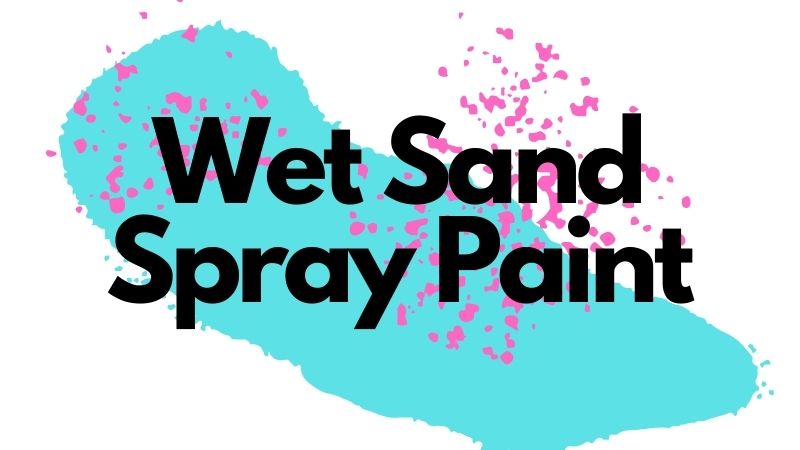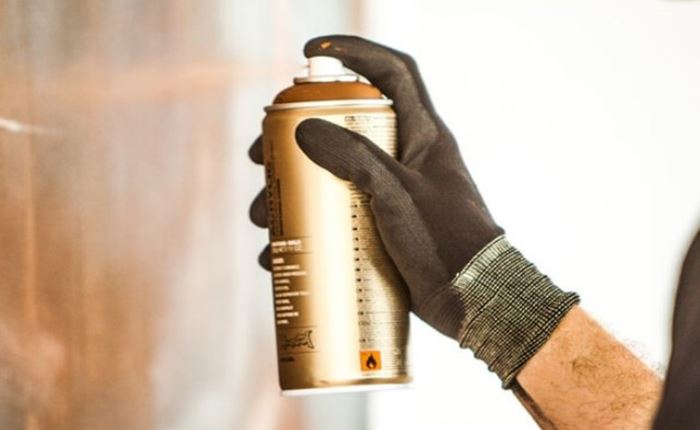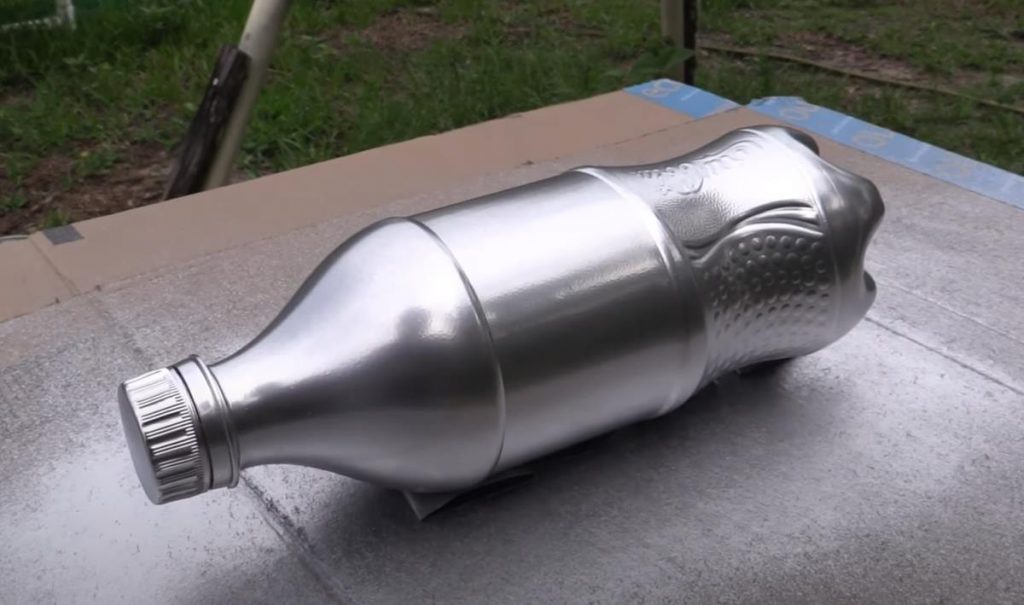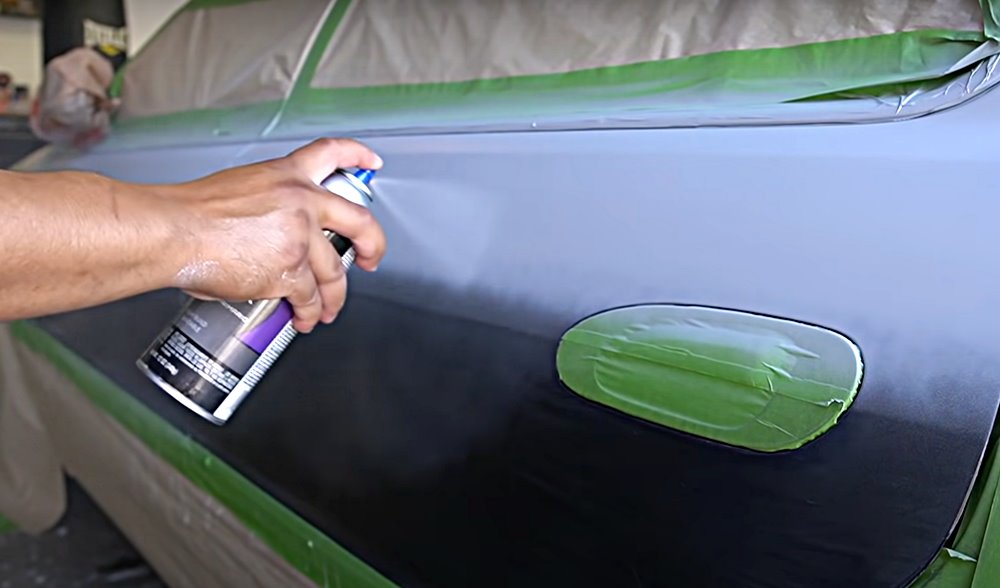Wet sand spray painting can be done in a number of ways. It is an excellent way to make your car look new again or to make your old desk chair look like it’s straight out of the showroom. But how long do you have to wait before wet sanding and spraying paint?
The paint job should be completed roughly half an hour before wet sanding can take place. However, paint type may play a factor in the amount of time the wet sanding takes.

Understanding Spray Paint
Spray paint is a type of paint that is packaged in a can and applied with a spray nozzle. It is widely used in a variety of applications, including automotive painting, graffiti, and DIY projects.
Spray paint dries through a process called solvent evaporation. The solvents in the paint evaporate, leaving behind a dry film of paint.
The drying time of spray paint is an essential factor to consider when wet sanding. If the paint is not fully dry, wet sanding can ruin the finish and create an uneven surface.
Factors Affecting Drying Time
1. Type of spray paint
Different types of spray paint have different drying times. For example, acrylic-based spray paint dries faster than enamel-based paint.
2. Temperature and humidity
Temperature and humidity can affect the drying time of spray paint. High humidity and low temperature can prolong the drying time.
3. Thickness of paint
The thickness of the paint layer can also affect drying time. Thicker layers of paint take longer to dry.
4. Ventilation
Proper ventilation can help accelerate the drying time of spray paint. Good ventilation allows solvents to evaporate faster, speeding up the drying process.
Determining When to Wet Sand Spray Paint
1. Visual cues
Visual cues, such as the paint’s appearance and texture, can indicate when it is safe to wet sand. A dry, dull finish with no visible wet spots is a sign that the paint is ready for wet sanding.
2. Time frame
Generally, it is safe to wet sand spray paint 24 hours after it has been applied. However, this can vary depending on the type of paint, thickness, temperature, and humidity.
3. Checking for dryness
To ensure that the paint is fully dry, you can use a finger test or a paint-drying accelerator. The finger test involves touching the paint surface lightly with your finger to check for any tackiness or transfer. A paint-drying accelerator is a chemical spray that helps speed up the drying time of the paint.
How to Wet Sand Spray Paint
Materials needed
To wet sand spray paint, you will need a sanding block, abrasive material (such as sandpaper), and water. You can also use a wet sanding sponge for a more comfortable grip.
Steps for wet sanding
The steps for wet sanding spray paint include preparing the surface, wetting the sandpaper, sanding the surface, and rinsing the surface with water. It is essential to use a light touch and avoid applying too much pressure, which can remove the paint layers.
Tips for effective wet sanding
Some tips for effective wet sanding include starting with a coarse abrasive and gradually moving to a finer grit, using a consistent back-and-forth motion, rinsing the surface regularly, and avoiding standing in the same spot for too long.
How long should you wait before re-spraying paint with wet sanding?
You want to give it two or three days. If your initial painting process was done outside and the weather is good, this shouldn’t be a problem. However, if it rained after you sprayed, then you may need more time for the paint to dry.
Remember, how long you wait before wet sanding and re-spraying paint is determined by how much moisture there was in the air during your initial painting process. So if it rained after you finished spraying, then give yourself more time for everything to dry up! You don’t want to do anything until the surface of whatever you are painting is completely dry.
How Long Should Rustoleum Spray Dry Before Sanding?
Sanding right before the curing time of Rustoleum is important to get a smooth, fine finish without scarring. Sanding too soon can leave stains or scratches on your surface that won’t come out easily with normal household cleaners; they might even be permanent unless you make sure all traces are removed first!
Once applied give it enough days (at least one week) for drying completely then remove any excess residue if necessary by hand after waiting patiently while holding an old rag over the top so particles don’t clog up the ventilation system—this allows us room during our next session when applying another coat.
Even though you know that water and electricity don’t mix, it’s hard to resist the temptation of giving your cheap paint job a quick sanding with an electric sander.
But before doing so be sure not to have any other projects or tasks ready because if there are small children in your home this could create some danger for them since they may come into contact with discharged cords from how well-meaning parents try fixing their mistakes without thinking first!
Can You Wet Sand Paint Before a Clear Coat?
Wet sanding the paint is essential before applying a clear coat to some surfaces. When you wet sand your paint, it’s important to wash it thoroughly with soap and water. Then, use a clear coat spray.
Since a clear coat excels at improving the smoothness of rough surfaces, it’s better to roughen the surface before you apply the clear coat. Doing this helps the paint stick to the surface better.
Remember, Your clear coat needs to be properly maintained, so you will want to refrain from waxing it for about 30 days. That will allow chemical drying and the evaporation of the solvents in the paint.
If you do not allow the solvents to dry, the bubbles in the paint will be visible. That’s why what you have done up to this point will not be effective.
Do You Wet Sand a Car After Painting?
Yes, there are a number of steps to completing the process. First, you have to be sure that your surface is smooth and free from any dirt or grime. You don’t want anything interfering with an even coat which could lead to additional work down the road!
Second how long do I have to wait after wet sanding and spray painting a car? You want at least five days before re-spraying your surface with another coat. This time frame will allow for proper drying and curing of the paint without any problems occurring later on.
Should I Sand Between Spray Paint Coats?
You want to wait until the first coat of paint is completely dry before sanding. To test how well your project has dried you can try running your fingers over it because if there’s any moisture, then you should give it more time. If you’re able to feel anything on top this means that the paint hasn’t dried enough yet!
How Long Before I Can Sand Spray Painted Walls?
How long should I wait to sand sprayed walls? You must wait until the paint has fully dried before sanding. This could take anywhere from two to three days depending on how well-ventilated your home or room is during this time!
Conclusion
Wet sanding is a vital step in achieving a professional-looking finish, and it helps to remove imperfections and create a smooth surface. When determining when to wet sand spray paint, it is crucial to consider factors such as the type of paint, thickness, temperature, humidity, and drying time. Visual cues and testing can also help to determine whether the paint is dry enough for wet sanding.
Wet sanding requires patience, attention to detail, and the right tools and materials. By following the steps outlined in this blog, readers can achieve a flawless finish and improve the overall appearance of their projects. It is essential to take the necessary precautions, such as wearing a mask and goggles, to protect oneself from dust and debris during the sanding process.


